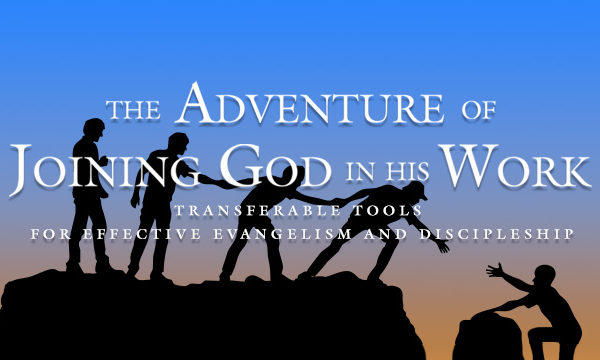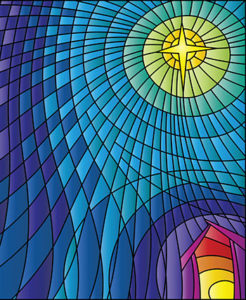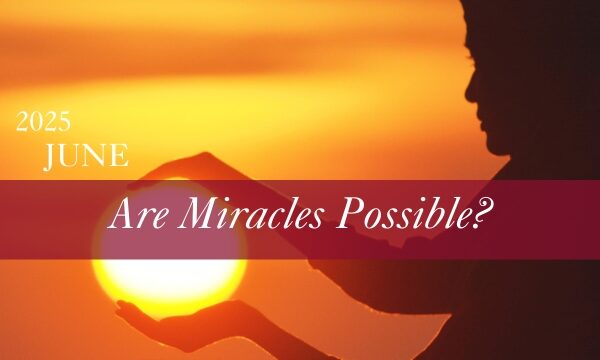Back to series



Decade of Discipleship
Click here to open a Print - Friendly PDF
A number of years ago, we put our home on the market in September. Thinking it would be a quick sell, we put all kinds of things in storage, including our Christmas decorations. We did this to declutter the house. Well December soon rolled along, and we hadn’t sold our home. This is when the shocking reality hit us. We had no Christmas decorations to celebrate the season! No homemade ornaments from years gone by, no red and green artificial poinsettia garlands, no nativity scenes, no wreathes, no Christmas lights, no artificial tree (a number in our family were allergic to live trees), and no Christmas books like A Christmas Carol or Christmas movies like It’s a Wonderful Life. We felt a little like the “Whos” in “Whoville” from The Grinch Who Stole Christmas. All of the “things” that help us celebrate Christmas were gone. Would it really feel like Christmas without all of this stuff?
Our deprivation of Christmas paraphernalia forced us to ask, What if we were to declutter the Christmas story and remove the extraneous additions that have become a part of our Christmas pageant experience and understanding? What would the story of the birth of Christ look like if it was based solely on the biblical text and the nonessential additions to the story were removed? Join with me as I attempt to declutter the Christmas story.
 Mary and Joseph have been ordered to report to Bethlehem for the census of Caesar Augustus. So Joseph helps Mary onto the donkey, and they start their journey. “Cut!” There is no donkey mentioned in the biblical account. Being from a poorer family, it’s likely that Mary and Joseph would have made the long, hard, three-day journey from Nazareth to Bethlehem on foot. Physicians speculate that Mary’s sudden delivery of Jesus in the stable may have been precipitated by the three days of strenuous walking, which has been known to induce labor.
Mary and Joseph have been ordered to report to Bethlehem for the census of Caesar Augustus. So Joseph helps Mary onto the donkey, and they start their journey. “Cut!” There is no donkey mentioned in the biblical account. Being from a poorer family, it’s likely that Mary and Joseph would have made the long, hard, three-day journey from Nazareth to Bethlehem on foot. Physicians speculate that Mary’s sudden delivery of Jesus in the stable may have been precipitated by the three days of strenuous walking, which has been known to induce labor.
So we have Mary and Joseph now walking to Bethlehem from Nazareth. They are bundled up, as the winter month of December can be bitterly cold. “Cut!” When did they go on their journey? We’re told that “the shepherds were abiding in the fields with their flocks by night.” In biblical times, farmers allowed shepherds into their fields after the fall harvest in October. The sheep would in essence clean up and re-fertilize the fields, so that when spring time came around the fields would be ready for planting. This means that the birth of
Christ was probably in October, so much for our December white Christmas.
Restart. In the month of October, Mary and Joseph walk to Bethlehem (Bethlehem literally means “House of Bread” — the town from which the Bread of Life will be born). When they arrive, the innkeeper of the Bethlehem Holiday Inn shares the sad news that he has no vacancies. We know this from the King James Version of the Bible, which reads, “there was no room for them in the inn.” “Cut!” Greek scholars today tell us that the word translated “inn” is actually a mistranslation. The word is better translated “guest room.” In other words, Joseph sought shelter at someone’s home, likely the home of his Bethlehem relatives. However, other cousins arrived sooner and took the guest room. So the innkeeper and the inn are no longer a part of our story.
Fortunately, Mary and Joseph are at least given a nicely built wooden stable to sleep in. Well, we’ll need to pause again. The stable or the place that the animals were kept was probably a cave. Caves are still used in Bethlehem as stables. If this is the case, the entrance to the cave would have provided shelter for them and there would have been straw and hay for the animals even if it was a bit smelly.
Once Mary and Joseph get settled in the stable, suddenly, Mary goes into labor. She delivers the greatest gift known to humankind, the Christ-child, the Son of God, Immanuel — “God with Us,” Jesus — “the one who will save us from our sins.” The shepherds abiding in their fields nearby are surprised by an angel of the Lord who tells them the good news and gives them a sign that they will find “baby wrapped in clothes and lying in a manger.”
They come to worship the newborn King of the Jews. The kings or wise men also come that evening to pay homage to Jesus and give him gifts. “Cut!” While it is true that the wise men, the magi, did follow the star to Bethlehem to pay homage to the King of the Jews, they probably didn’t show up until Jesus was a toddler. This is surmised since Matthew tells us the wise men entered the house of Joseph and Mary (not the stable), and we’re told that Herod followed up the visit of the wise men with an edict to murder all of the boys two years old or younger in the Bethlehem area. So it is likely that the wise men met Jesus as much as two years after the actual date of Jesus’s birth. The gifts they gave Jesus, gold, frankincense, and myrrh were very valuable gifts and may well have provided the wealth needed for Joseph, Mary, and Jesus to fund the trip to Egypt to escape the wrath of Herod.
So we have decluttered the story of the birth of Christ. There is no donkey to carry Mary to Bethlehem, no December white Christmas, no inn or innkeeper, no wooden stable, and no wise men by the manger. So what do we have left? We still have the simple yet complex, glorious, marvelous, wonderful, awe-inspiring true story of a step-dad named Joseph and an obedient, grace-filled teenager named Mary, who gave birth to the Savior of the world, Jesus Christ. As C.S. Lewis puts it in Mere Christianity, we have the story that tells us how “the Son of God became a man to enable men to become the sons of God.”1

|
Notes: |
|||

Joel Woodruff
President, C.S. Lewis InstituteJoel Woodruff, President, C.S. Lewis Institute, has worked in higher education, “tent-making,” nonprofit administration, and pastoral ministries in Alaska, Israel, Hungary, France, and Northern Virginia. He served as Dean of Students, Chaplain, and Professor of Bible & Theology at European Bible Institute, where he helped train Europeans both for professional ministry and to be Christian leaders in the marketplace. Prior to joining the Institute, he was on the leadership team of Oakwood Services International, a nonprofit educational and humanitarian organization. He is a graduate of Wheaton College, earned his M.Div. from Gordon-Conwell Theological Seminary, and has a doctorate in Organizational Leadership from Nova Southeastern University. As a Parish-Pulpit Fellow, he studied Biblical Backgrounds & Archaeology in Israel for a year.

 COPYRIGHT: This publication is published by C.S. Lewis Institute; 8001 Braddock Road, Suite 301; Springfield, VA 22151. Portions of the publication may be reproduced for noncommercial, local church or ministry use without prior permission. Electronic copies of the PDF files may be duplicated and transmitted via e-mail for personal and church use. Articles may not be modified without prior written permission of the Institute. For questions, contact the Institute: 703.914.5602 or email us.
COPYRIGHT: This publication is published by C.S. Lewis Institute; 8001 Braddock Road, Suite 301; Springfield, VA 22151. Portions of the publication may be reproduced for noncommercial, local church or ministry use without prior permission. Electronic copies of the PDF files may be duplicated and transmitted via e-mail for personal and church use. Articles may not be modified without prior written permission of the Institute. For questions, contact the Institute: 703.914.5602 or email us.
-
Recent Podcasts
Reasoning Requires Faith – Jeffrey Geibel’s Story
by Jeffrey Geibel on July 4, 2025What happens when the pursuit of intellectual certainty...Read More
-
Fix Your Eyes Upon Jesus
by Steven Garber, Aimee Riegert on June 27, 2025
-
An Honest Search for God – Dr. Jay Medenwaldt’s Story
by Jana Harmon, Jay Medenwaldt on June 20, 2025
-
Recent Publications
Are Miracles Possible
by Christopher L. Reese on June 1, 2025The 21st century has provoked many conversations and...Read More
-
Is God Just, Not Fair?
by Jennifer Rothschild on May 15, 2025
-
Seeking Dietrich Bonhoeffer
by Joseph A. Kohm on April 29, 2025
0
All Booked
0.00
All Booked
0.00
All Booked
24720
The Adventure of Joining God in His Work Live Online Small Group 7:00 PM CT
https://www.cslewisinstitute.org/?event=the-adventure-of-joining-god-in-his-work-live-online-small-group-700-pm-ct&event_date=2025-09-16®=1
https://www.paypal.com/cgi-bin/webscr
2025-09-16

Next coming event
Days
Hours
Minutes
Seconds
The Adventure of Joining God in His Work Live Online Small Group 7:00 PM CT
On September 16, 2025 at 7:00 pmTags
Speakers

Joel Woodruff
President, C.S. Lewis Institute
Team Members

Joel Woodruff
President, C.S. Lewis InstituteJoel Woodruff, President, C.S. Lewis Institute, has worked in higher education, “tent-making,” nonprofit administration, and pastoral ministries in Alaska, Israel, Hungary, France, and Northern Virginia. He served as Dean of Students, Chaplain, and Professor of Bible & Theology at European Bible Institute, where he helped train Europeans both for professional ministry and to be Christian leaders in the marketplace. Prior to joining the Institute, he was on the leadership team of Oakwood Services International, a nonprofit educational and humanitarian organization. He is a graduate of Wheaton College, earned his M.Div. from Gordon-Conwell Theological Seminary, and has a doctorate in Organizational Leadership from Nova Southeastern University. As a Parish-Pulpit Fellow, he studied Biblical Backgrounds & Archaeology in Israel for a year.





